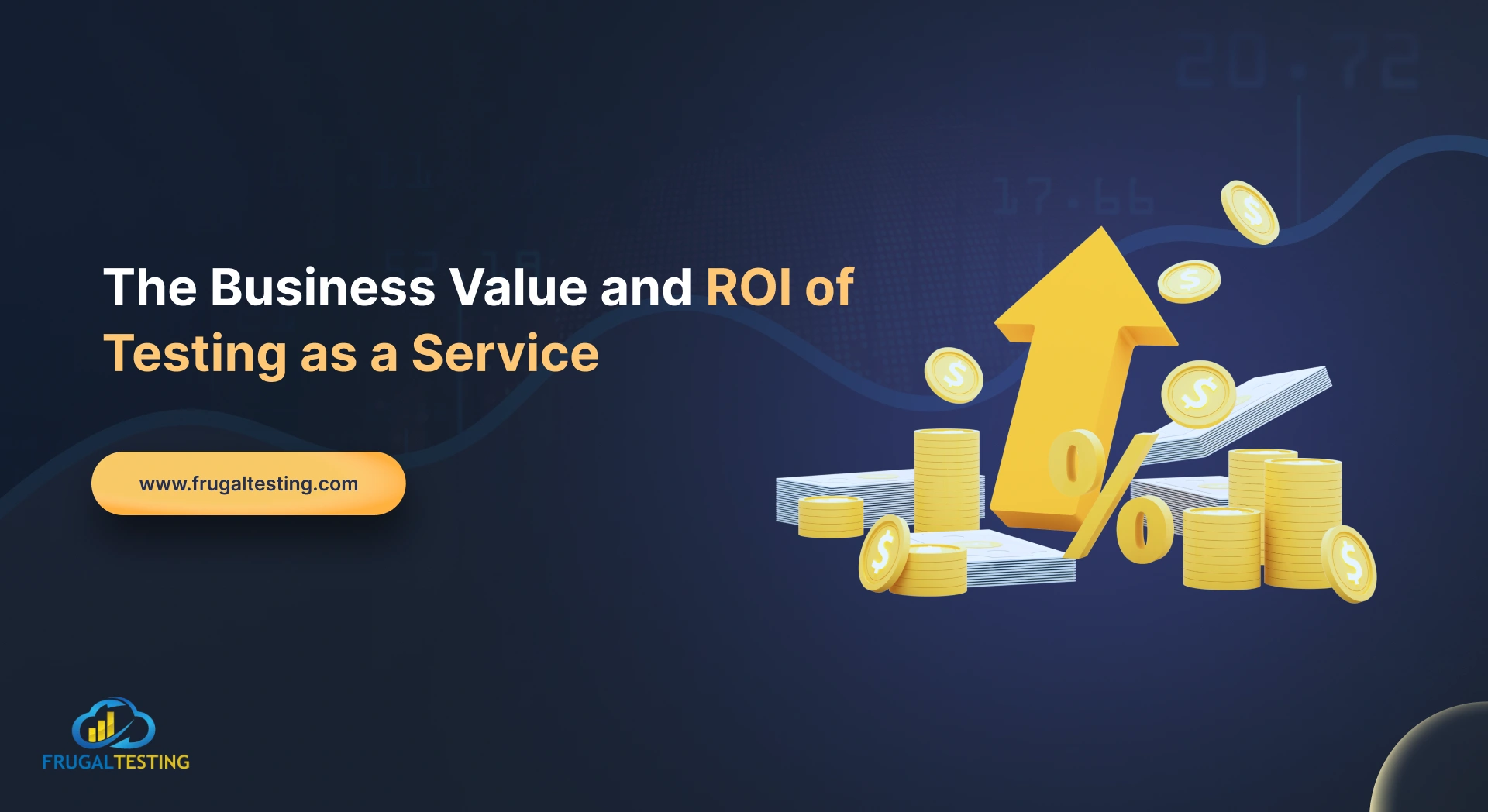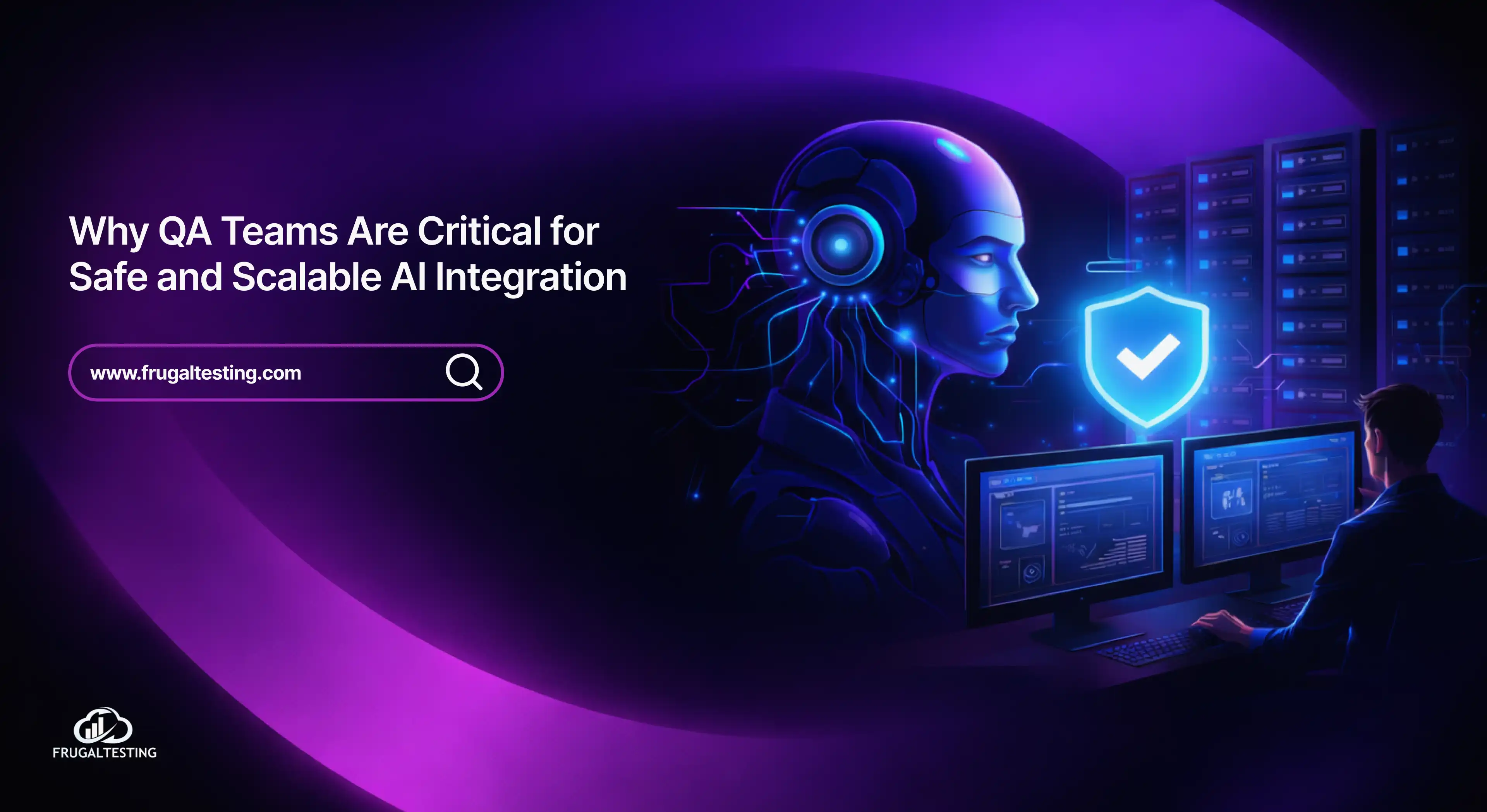Providing quality software quickly is no longer an option, it's a requirement in today's development cycles. End-to-End (E2E) testing is essential for ensuring that applications run smoothly across all associated systems and user journeys.
However, as complexity increases, manual testing falls short. That is where artificial intelligence (AI) comes in to change testing. By incorporating AI into software testing, organizations can automate complex operations, find errors earlier, and make better decisions across the QA lifecycle.
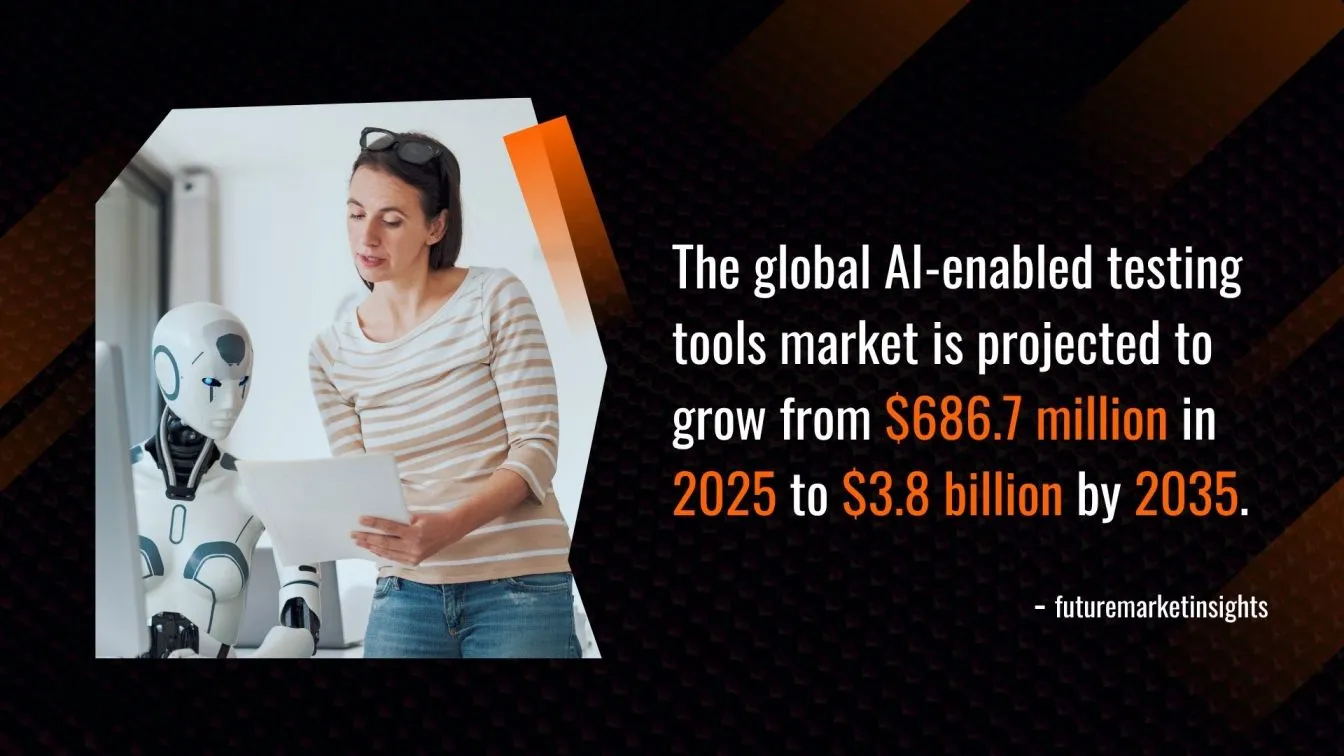
Whether you're looking into AI tools for testing, automating E2E testing, or scaling with AI-based software testing services, this book will help you traverse the field with confidence.
What You'll Learn ✅
📌 What is E2E testing and its importance in quality assurance.
📌 Discover how AI in automation testing is transforming each phase of E2E testing.
📌 Explore real-world AI applications in software testing across industries.
📌 Discover the best AI automation testing tools for scalable QA.
📌 Learn how to choose the best AI-powered testing tools.
📌 Follow the best practices for developing AI-driven tactics.
What is End-to-End Testing?
End-to-End (E2E) testing is a software testing method that tests the full application flow, from beginning to end, to ensure that all components function together seamlessly. Unlike unit or integration tests, which focus on individual modules, E2E tests imitate real-world user scenarios to ensure that the system performs as expected.
Simply put, it determines whether your product behaves correctly from the user's perspective, which includes everything from UI interactions to backend procedures and third-party integrations. In E2E testing, it’s important to validate that the E2E encryption is working correctly, especially in apps handling sensitive information.
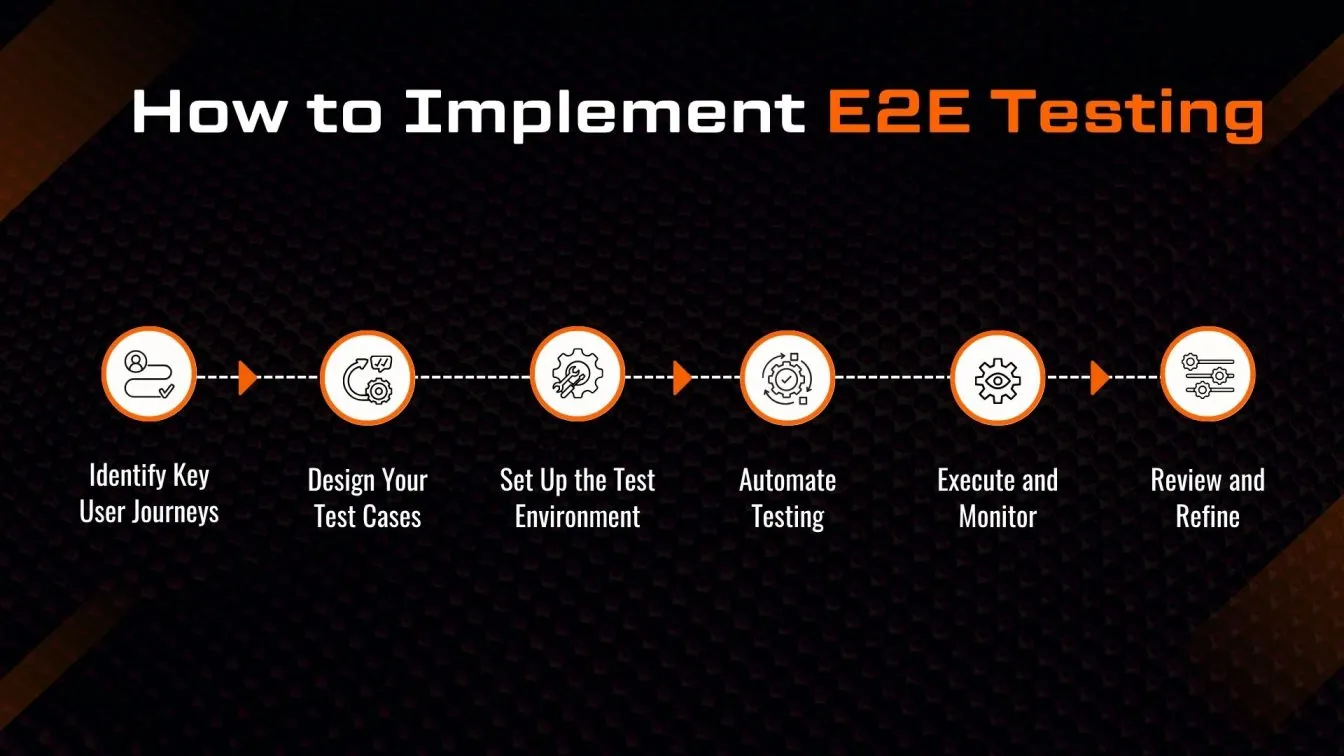
The Role of AI in Modern E2E Testing
The rise of artificial intelligence (AI) has fundamentally altered how End-to-End (E2E) testing is planned, done, and maintained. Traditional testing methods frequently fail to keep up with rapidly changing software, flaky tests, and large data volumes. This is where AI in e2e software testing provides a breakthrough advantage.
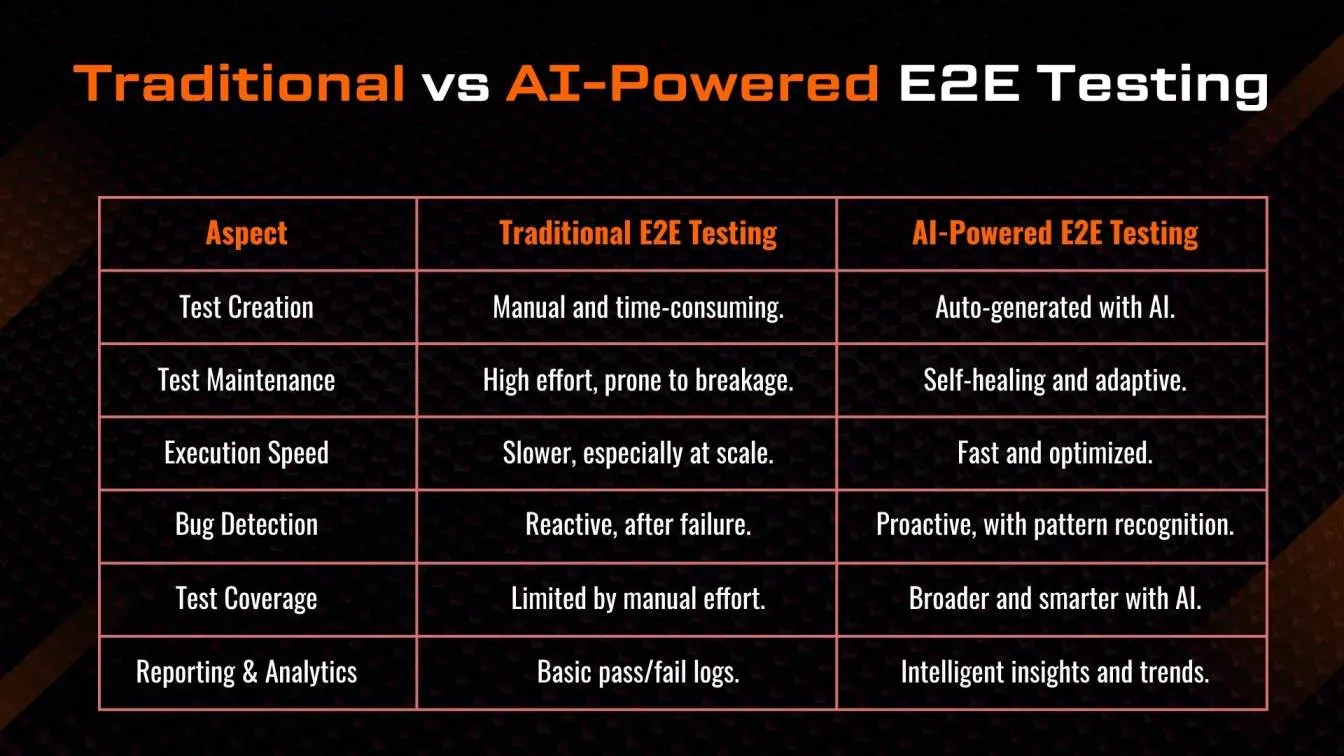
AI enables QA teams to move faster, test smarter, and change faster, making testing more dependable and scalable than ever before.
- Smart Test Generation: AI testing solutions can produce E2E test cases automatically by studying user behavior, application flows, and change history, eliminating the need for manual intervention.
- Test Optimization and Prioritization: AI algorithms can help prioritize E2E tests based on risk and impact, ensuring that key paths are checked first while saving time and resources.
- Self-Healing Test Automation: AI automated testing allows tests to automatically react to changes in the user interface, repairing broken locators without human involvement and eliminating flaky test failures.
- Advanced Reporting and Analytics: AI employs sophisticated analytics to uncover trends in failures, detect core causes, and even predict possible problems before they happen.
- Smarter Data Handling: AI helps to generate and manage realistic test data for complicated E2E operations, hence increasing test coverage and accuracy.
- Seamless Integration with DevOps Pipelines: Modern AI testing software seamlessly connects with CI/CD technologies, providing automatic E2E testing with each release.
How AI Enhances Each Stage of End-to-End Testing
Integrating artificial intelligence into software testing does more than just automate procedures; it optimizes and enhances all stages of the E2E testing lifecycle. From planning to reporting, AI assists QA teams in developing faster, smarter, and more reliable test systems.
Let's look at how AI-driven testing tools improve each step of end-to-end testing:
Test Planning and Strategy
Traditional ways to test planning rely primarily on manual work and assumptions. AI in software testing allows teams to study historical data, user behavior, and system usage to identify high-risk regions and develop smarter test methodologies.
AI enables:
- Data-driven test prioritization.
- Identifying high-risk locations
- Smarter test coverage planning.
- Risk-based testing technique
- Continuous improvement with insights
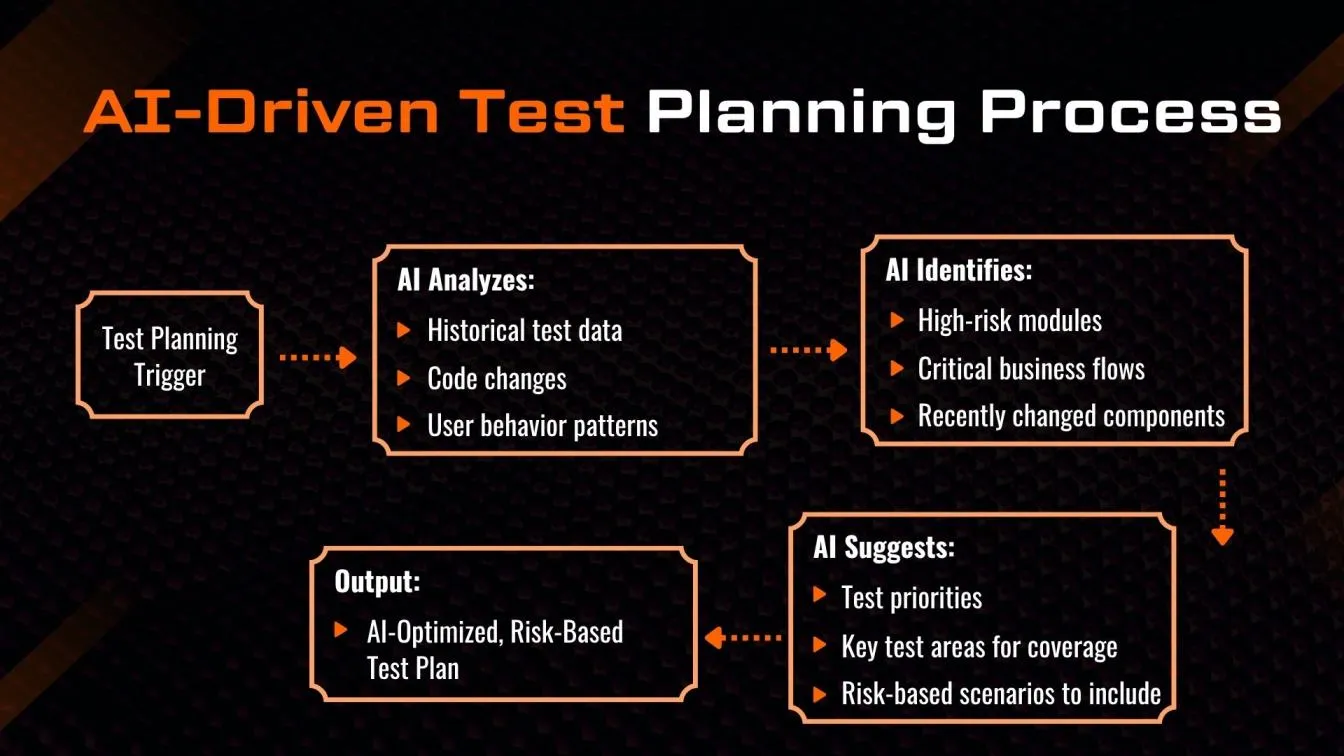
Test Case Design and Generation
Manually developing test cases for complicated applications is time-consuming, repetitious, and prone to human mistake. AI for software testing enables teams to construct E2E test cases based on user behavior, UI structure, code changes, and historical failures.
Instead of creating test scripts line by line, AI testing tools evaluate application flow and usage trends to generate smart, relevant, and reusable test scenarios, resulting in great coverage with minimal work. AI uses Computer Vision to validate visual elements on the UI, enabling smarter visual testing across dynamic layouts and devices.
AI enables:
- Improved scalability as applications evolve.
- Quicker turnaround for new feature tests.
- Improved accuracy in reflecting actual user journeys
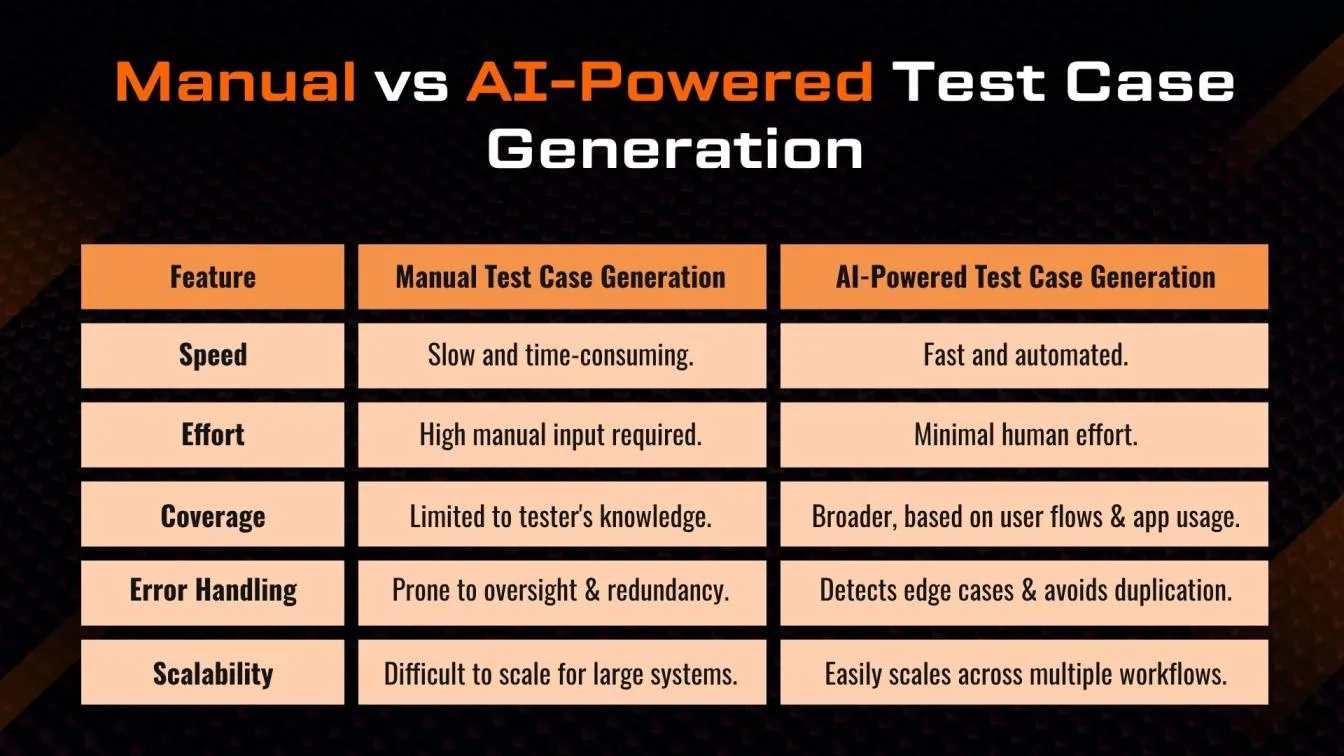
Test Data Management
In End-to-End (E2E) testing, data is critical. Without the proper data, even the best-written test case can fail or become meaningless. Traditionally, handling test data required manual creation, duplication, and cleanup, which was error-prone and time-consuming. AI-driven test accuracy heavily depends on feeding the system with high-quality data, ensuring realistic, reliable, and meaningful test outcomes.
Teams can use AI in software testing to automate this process by creating realistic, diversified, and context-aware test data. AI models use current data patterns and application logic to recreate real-world scenarios, ensuring that testing is accurate and meaningful.
AI enables:
- Test Reliability
- Data consistency across environments.
- Compliance, particularly in regulated businesses.
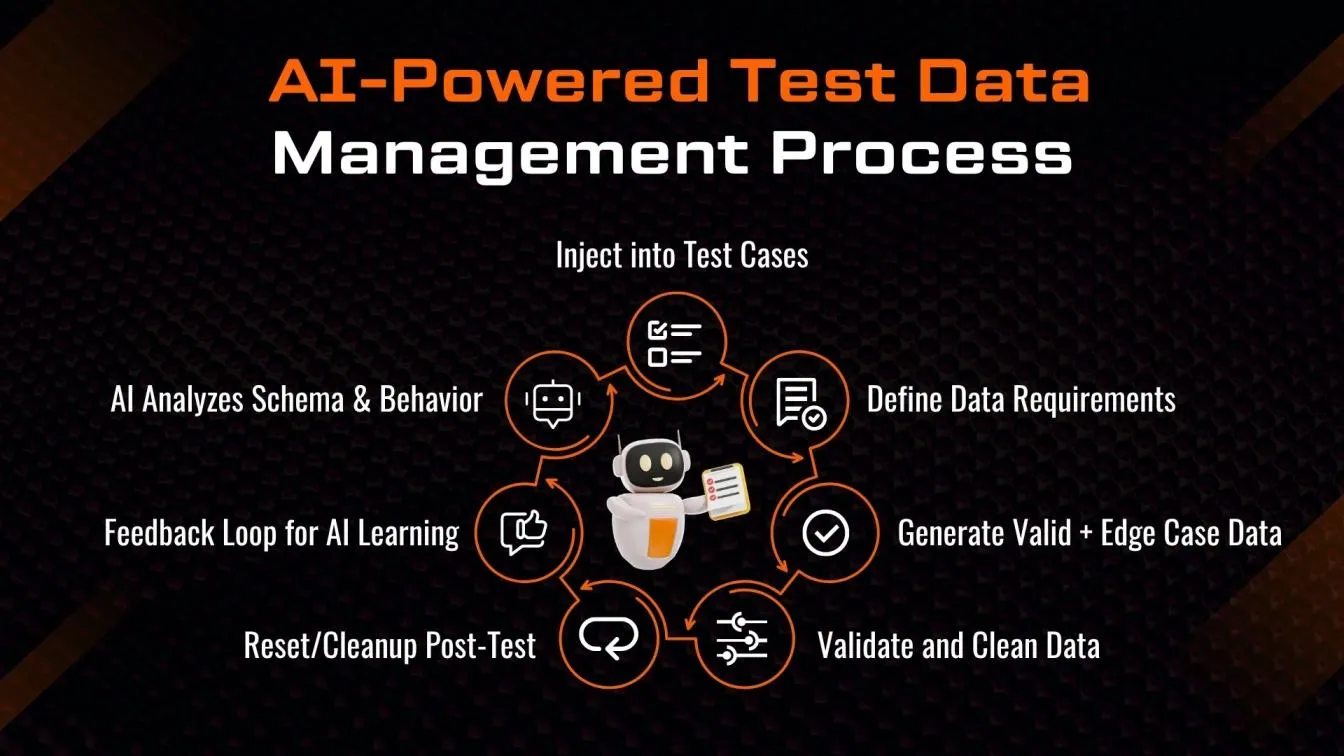
Test Execution and Prioritization
Executing all test cases in each cycle is inefficient and slow, particularly in large systems. Software testing AI helps optimize this process by analyzing risk, code changes, and test history to intelligently prioritize high-impact test cases. This test results in speedier feedback, optimized execution time, and fewer wasted resources. AI-powered testing tools analyze real user interactions to prioritize test flows that matter most to the end-user experience.
AI enables:
- Risk-based test selection
- Faster test cycles.
- Prioritized execution.
- Smarter resource use
- Real-time scope adjustments
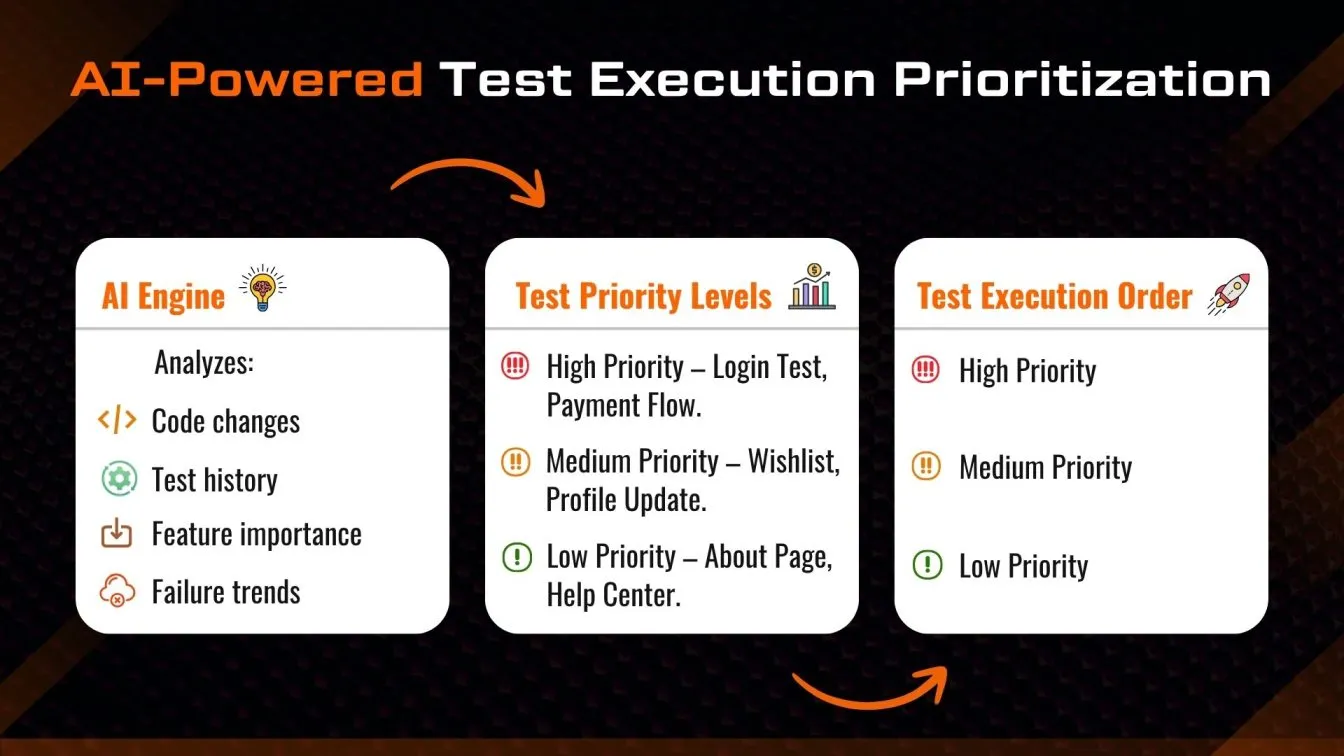
Maintenance and Self-Healing
Frequent UI changes lead to flaky test failures, making maintenance a nightmare. AI solves this problem by self-healing automation: when locators fail, AI automatically repairs them, keeping the testing stable without human intervention.
AI enables:
1. Auto-updating test scripts
2. Auto-correct for UI locator changes.
3. Fewer flaky test failures.
4. Reduced manual maintenance.
5. Improved test suite stability.
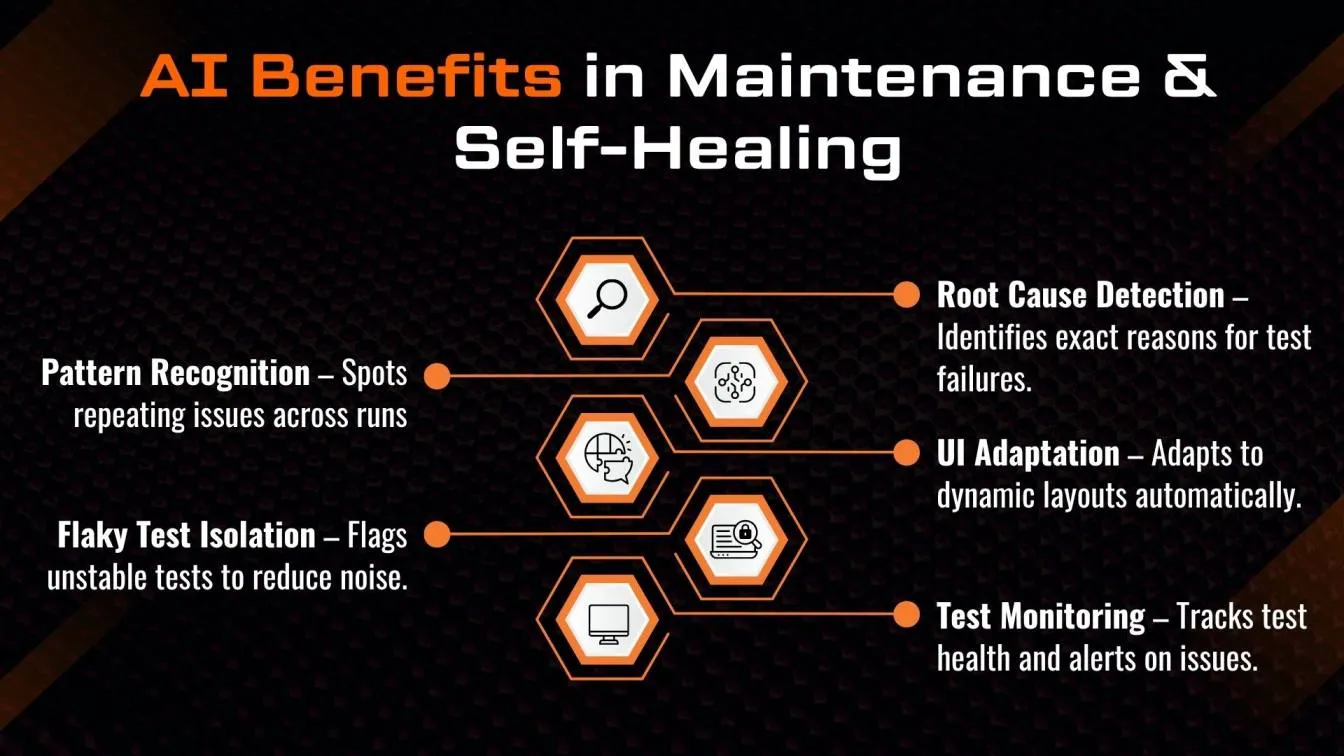
Reporting and Analytics
AI does more than merely perform tests; it also interprets the outcomes. Deeper insights, failure pattern detection, and predictive alarms are all possible using AI-powered analytics on your E2E test data. AI tools for software testing can auto-generate detailed bug reports with logs, screenshots, and root cause insights reducing developer debugging time. No more manually digging through logs!
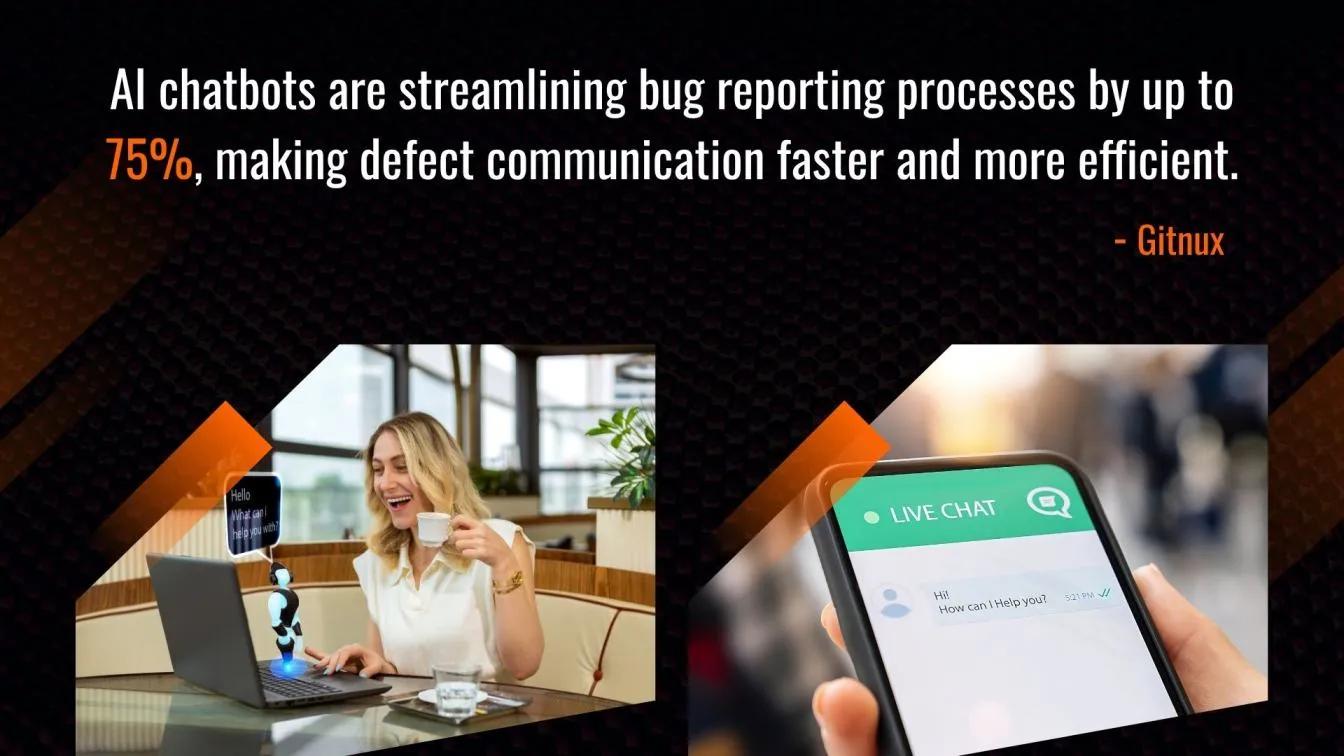
AI enables:
- Identifying failure patterns
- Predictive defect notifications.
- Flaky test tracking
- Smart Dashboards and Summaries
- Actionable insights for QA teams.
Real-World Use Cases of AI in End-to-End Testing
AI in end-to-end (E2E) testing is no longer a pipe dream; it is altering how enterprises deliver high-quality software more quickly. Teams can employ AI automated testing methodologies to forecast problems, decrease flakiness, and respond quickly to changing user experiences.
Let's look at how various businesses are using AI testing automation and AI software testing solutions to address real-world QA difficulties.
E-commerce: Using AI for High-Speed Checkout Flow Testing
The checkout flow on e-commerce platforms is one of the most important and sensitive consumer experiences. A minor delay, UI malfunction, or payment failure might result in cart abandonment and lost revenue, making quality assurance in this flow essential.
However, traditional E2E testing frameworks frequently fail to keep up with the ever-changing nature of e-commerce platforms. Frequent UI changes, rapid product rollouts, tailored user experiences, and real-time pricing make testing complex, repetitive, and difficult to manage.
This is where AI in software testing emerges as a strategic enabler. AI-powered test automation tools improve the speed, accuracy, and intelligence of the checkout testing process. They not only assist uncover errors earlier in the pipeline, but they also automatically adapt to changes in the user interface, minimizing flaky tests and boosting overall test reliability.
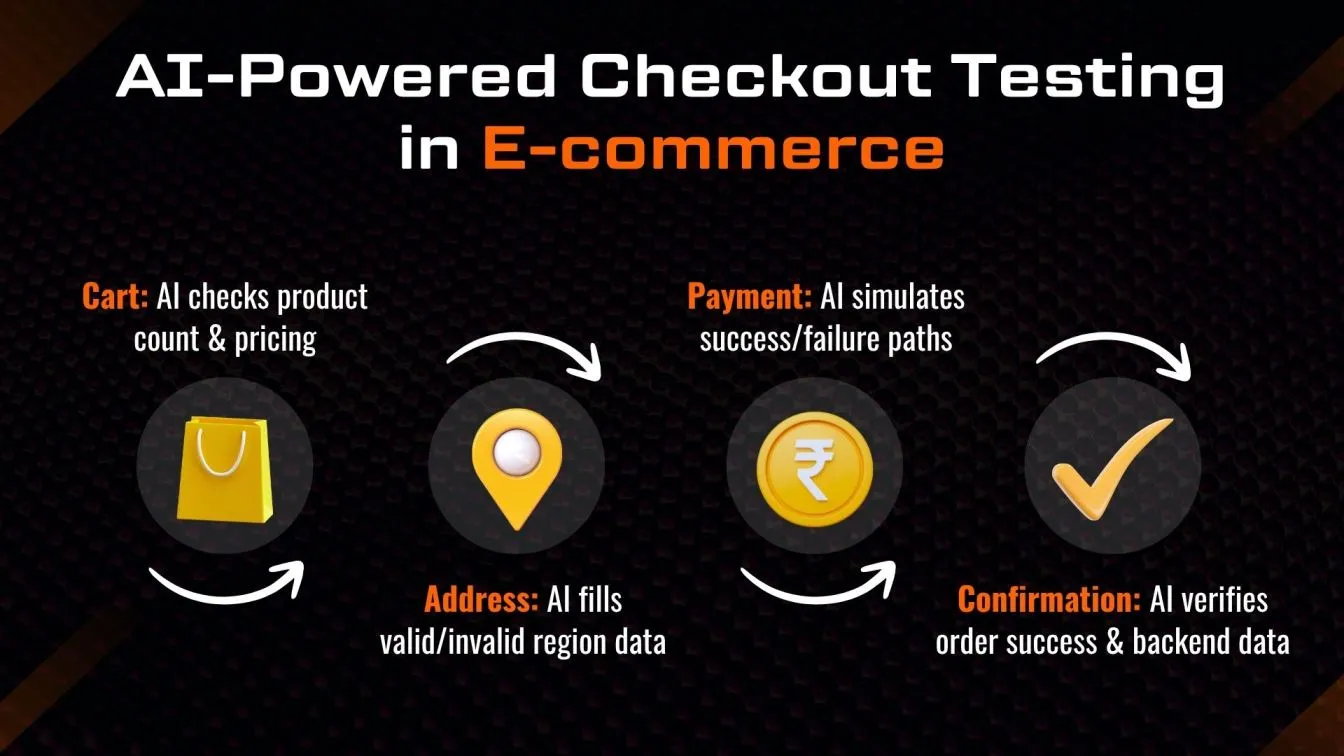
Banking: Intelligent Risk-Based Testing of Loan Processing
Loan processing in banking applications is a sophisticated and highly regulated procedure that includes data validation, risk assessment, approval logic, and compliance checks. Traditional end-to-end (E2E) testing frequently handles all test scenarios equally, resulting in wasting efforts on low-impact flows while potentially overlooking high-risk failure points. This is where AI in software testing offers a game-changing strategy: risk-based testing.
AI algorithms use code modifications, previous faults, production logs, and business-critical KPIs to intelligently prioritize test executions. Instead of executing hundreds of test cases blindly, AI prioritizes the most critical flows like credit score validation, EMI calculation, and edge cases such as third-party data retrieval for faster, more targeted testing.
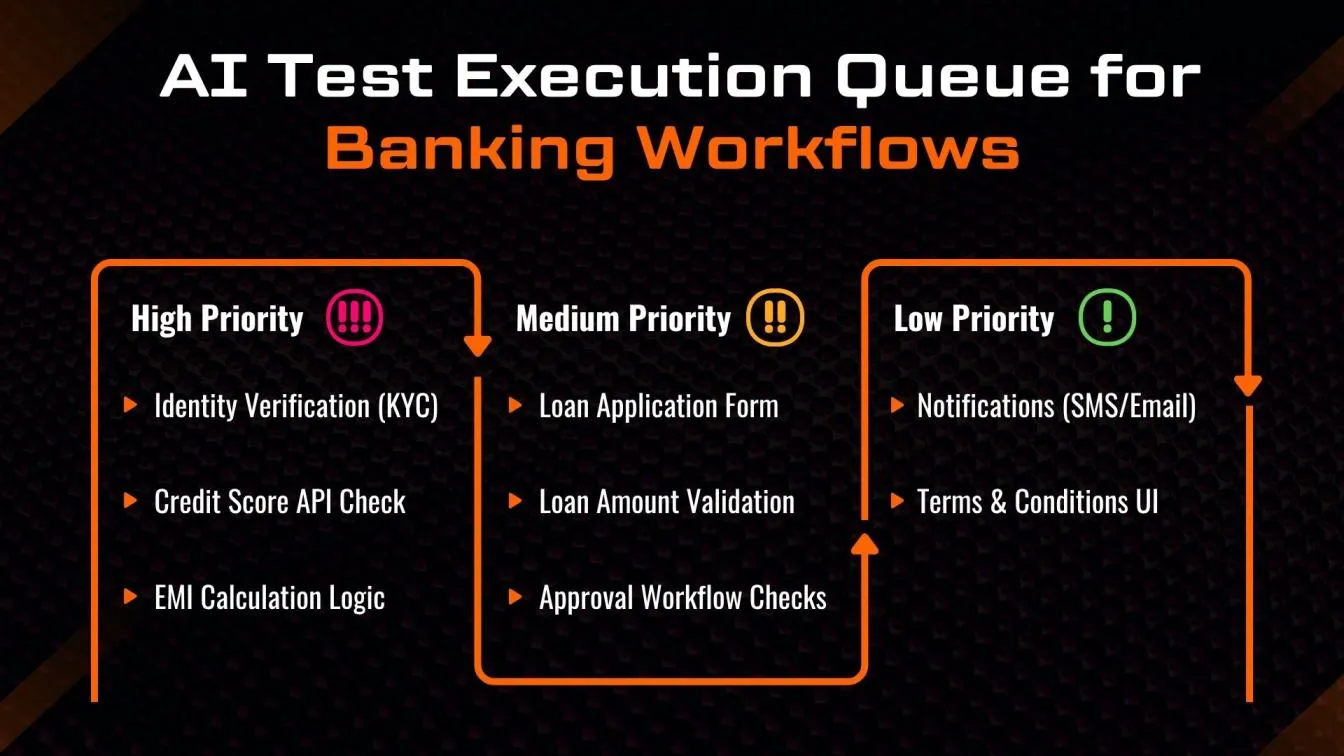
SaaS: Self-Healing UI Tests During Rapid Product Updates
SaaS platforms are constantly updated, ranging from weekly updates to daily UI modifications. These changes frequently disrupt typical E2E tests, particularly when locators or element pathways shift. Maintaining test stability can be time-consuming and error-prone.
This is where AI in software testing comes in. AI-powered systems detect broken tests, update locators automatically, and adjust in real time based on previous patterns, significantly decreasing the need for manual maintenance.
By employing AI test automation, SaaS teams ensure that continuous delivery pipelines remain operational even as the user interface advances rapidly.
Top Tools for AI-Powered End-to-End Testing
With the increasing use of AI in testing software, several products stand out for providing smart, scalable, and robust test automation. These platforms employ artificial intelligence to reduce maintenance, react to UI changes, and accelerate release cycles, making them perfect for automated E2E testing.
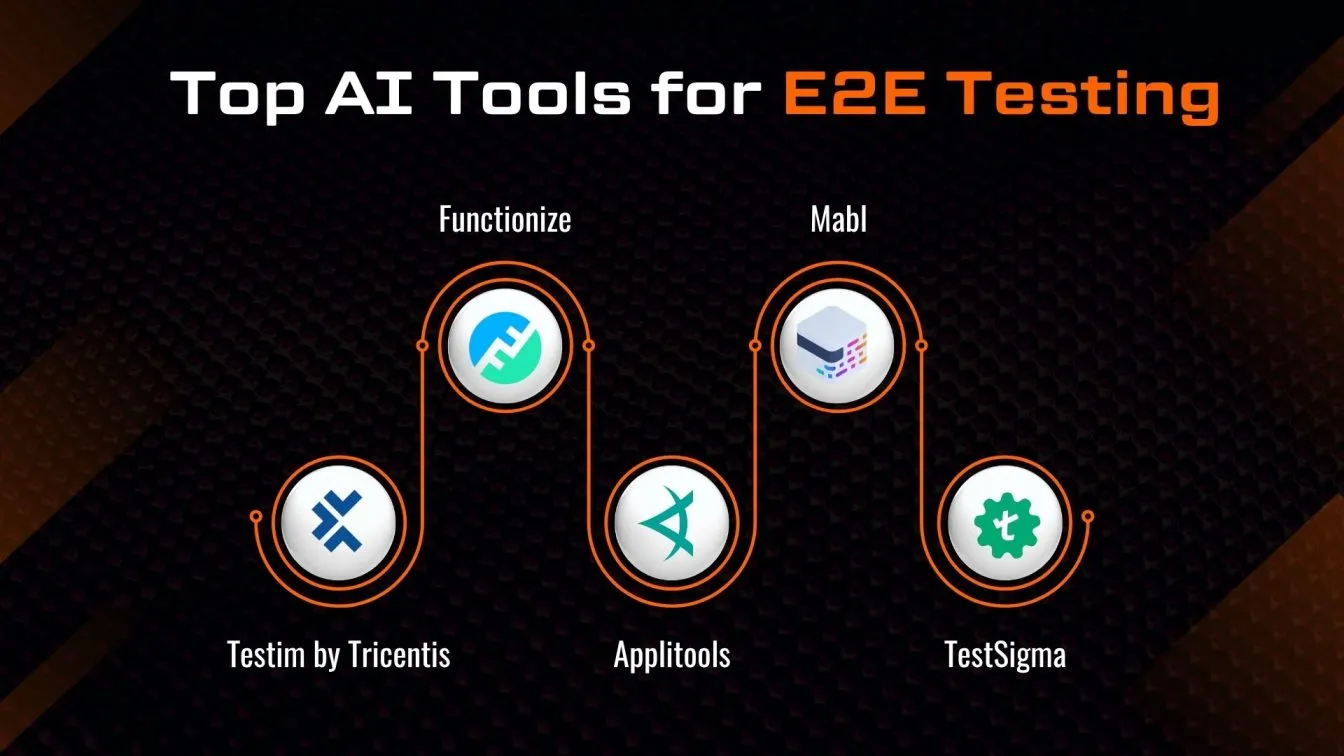
1. Testim by Tricentis: Testim applies artificial intelligence to software testing to assist teams in developing rapid, stable, and adaptive tests. Its self-healing capabilities ensure that tests stay reliable even if UI elements change regularly.
Key Features:
- AI-powered, self-healing test scripts
- Intelligent locator management and version control
- Optimized for agile and continuous delivery scenarios.
2. Functionize: Functionize is a strong generative AI testing tool that allows you to create tests in plain English. It combines machine learning and natural language processing to make your testing process more efficient and scalable.
Key Features:
- Developing Natural Language Tests with NLP
- Scalable cloud test execution across browsers and devices.
- Smart maintenance using AI-powered test insights
3. Applitools: Applitools specializes in AI for testing visual interfaces, ensuring pixel-perfect UI validation across all browsers. It's ideal for teams focused on dynamic or design-critical applications.
Key Features:
- Visual comparison of AI and ML models
- Integrate seamlessly with main E2E test frameworks.
- Reduces false positives in visual regressions.
4. Mabl: Mabl is an all-in-one testing solution that incorporates AI into automation testing to self-heal tests and discover faults early on. It is ideal for CI/CD-driven DevOps settings.
Key Features:
- Adaptive testing based on app modifications
- Flaky test detection and diagnostic reports.
- Low-code UI with complete API test coverage
5. TestSigma: TestSigma allows for automatic end-to-end testing without the need to write code. It employs AI for QA testing and natural language processing to generate and maintain tests for web, mobile, and APIs.
Key Features:
- Simple English test scripting
- Artificial intelligence-powered suggestions and maintenance
- Real-time test feedback integrated into CI/CD
How to Choose the Right AI-Powered Tool for End-to-End Testing
As AI-powered testing becomes an increasingly important aspect of modern software development, choosing the correct technology is crucial. The appropriate decision can increase test efficiency, minimize manual work, improve fault detection, and enable faster, higher-quality software releases. With historical data and pattern recognition, AI can perform defect prediction to identify which areas are most likely to break before they do.
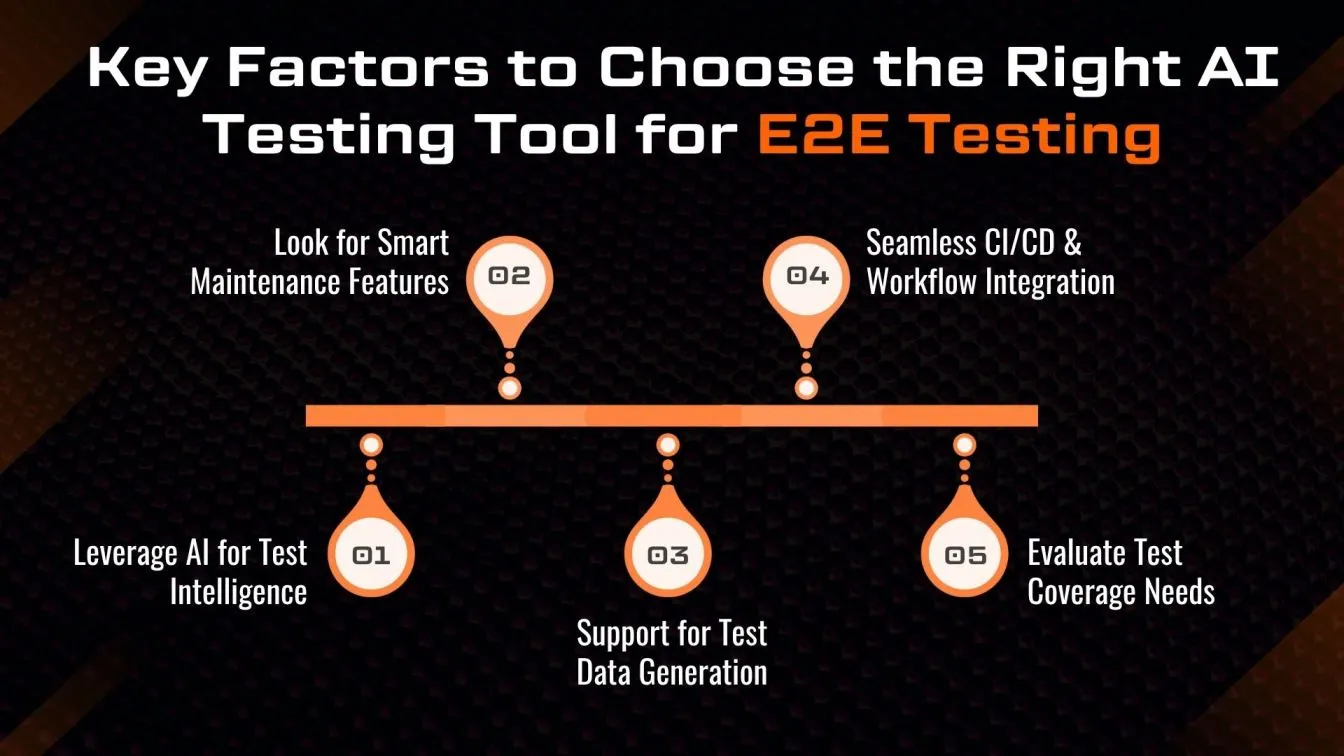
1. Evaluate Test Coverage Needs: Choose technologies appropriate for your application type, such as cross-browser testing, sophisticated ERP systems, or security testing. They should also support sophisticated approaches such as exploratory testing, visual testing, and edge case coverage, which ensure that no key path goes untested.
2. Look for Smart Maintenance Features: Choose tools with Self-Healing Locators, AI Testing Agents, and automatic script adaption. These features dramatically minimize test flakiness and human rework by automatically updating tests in response to UI or DOM changes, which is particularly valuable during regression tests.
3. Seamless CI/CD & Workflow Integration: To enable continuous testing, your solution should seamlessly integrate into existing CI/CD pipelines and test environments. Real-time performance data and fast notifications aid in the early detection of faults, hence speeding up software development and release cycles.
4. Leverage AI for Test Intelligence: The proper platform should support AI-powered test case development, fault prediction, and predictive analytics. These insights enable QA teams to prioritize problematic regions, eliminate test redundancy, and gain more control over growing and improving their test automation systems.
5. Support for Test Data Generation: Reliable AI-powered testing solutions must effectively manage complicated test data generation operations. From creating edge case data to guaranteeing consistency across environments, clever data management enhances fault discovery and real-world accuracy in performance testing.
Best Practices for Implementing AI in End-to-End Testing
Adopting AI-powered testing into your E2E automation process entails more than just selecting the right solution; it also requires proper setup. These best practices, which include adequate planning and performance monitoring, promote long-term success and demonstrable gains in software quality.
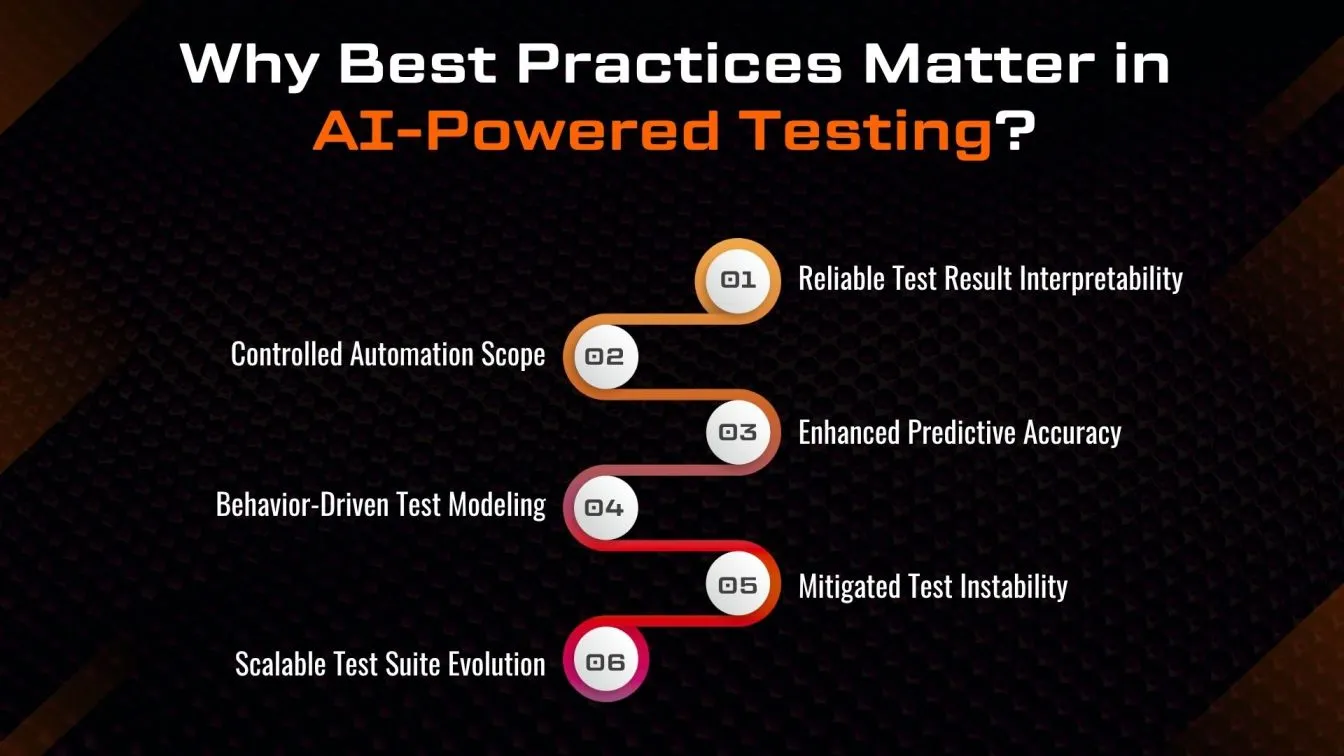
Here are the fundamental practices that any QA team should use:
1. Start Small, Then Scale: Begin with a certain scope, such as regression testing or test case generation. Testing AI on smaller workflows enables your team to analyze performance and fine-tune setups before deploying it throughout the enterprise.
2. Focus on High-Impact Areas: Use AI to test modules with frequent UI changes, dynamic data, or repetitive operations. Self-healing scripts and AI Testing Agents are particularly effective in these areas, reducing the need for manual test maintenance.
3. Maintain Human Oversight: Even with AI, QA testers must monitor results, identify abnormalities, and confirm them. This balance guarantees that automation improves quality while preserving human context and control over defect detection.
4. Monitor Metrics and Learn from Results: Monitor KPIs such as test success rate, performance metrics, and false positives. Use Predictive Analytics to optimize CI/CD pipelines, increase test automation coverage, and detect flaky tests early on.
5. Ensure Secure, High-Quality Test Data: To protect sensitive information, generate test data from clean, relevant data and adhere to rigorous security measures. Poor or exposed data can jeopardize accuracy and compliance.
Final Thoughts 🧠
As software systems become more sophisticated and release cycles become more demanding, including AI into end-to-end (E2E) testing is not just a pipe dream—it's a competitive must. From test planning and data management to self-healing scripts and intelligent reporting, AI-powered testing makes traditional QA faster, smarter, and more resilient.
Understanding the role of AI in software testing, researching real-world applications in industries like e-commerce, banking, and SaaS, and utilizing the correct tools and best practices can help QA teams achieve scalable automation, deeper insights, and faster delivery. For teams that prefer ready-to-go solutions, several AI test automation service providers offer fully managed E2E testing tailored to your product and industry.
In the age of continuous testing and CI/CD pipelines, teams that welcome innovation are more likely to succeed. With the appropriate combination of AI-powered tools, strategy, and human oversight, your team can use AI in software testing to gain a real-world quality advantage.
FAQs
1. What’s the role of AI in maintaining test coverage across full-stack E2E testing?
AI continuously analyzes application layers from frontend UI to backend APIs and databases to identify gaps, generate relevant test cases, and ensure critical workflows remain thoroughly tested even as the system evolves.
2. What is the difference between AI-based testing and traditional automation frameworks like Selenium?
Traditional tools like Selenium rely on static scripts, while AI testing adapts dynamically.
AI enables self-healing, smarter locator strategies, and predictive analytics for test optimization.
3. How secure is test data when using AI-based testing platforms?
Most platforms follow enterprise-grade security practices like encryption, masking, and role-based access. Ensure your tool complies with GDPR, SOC 2, or industry standards for safe test data handling.
4. How does AI improve E2E testing in multi-user workflows?
AI simulates interactions between multiple user roles by dynamically generating test paths and managing shared test data. It ensures consistent flow and detects issues across role-based journeys.
5. How does AI reduce the cost of end-to-end testing?
By minimizing manual test maintenance, improving test stability, and detecting bugs early. It boosts efficiency in regression testing, saving QA teams both time and resources.



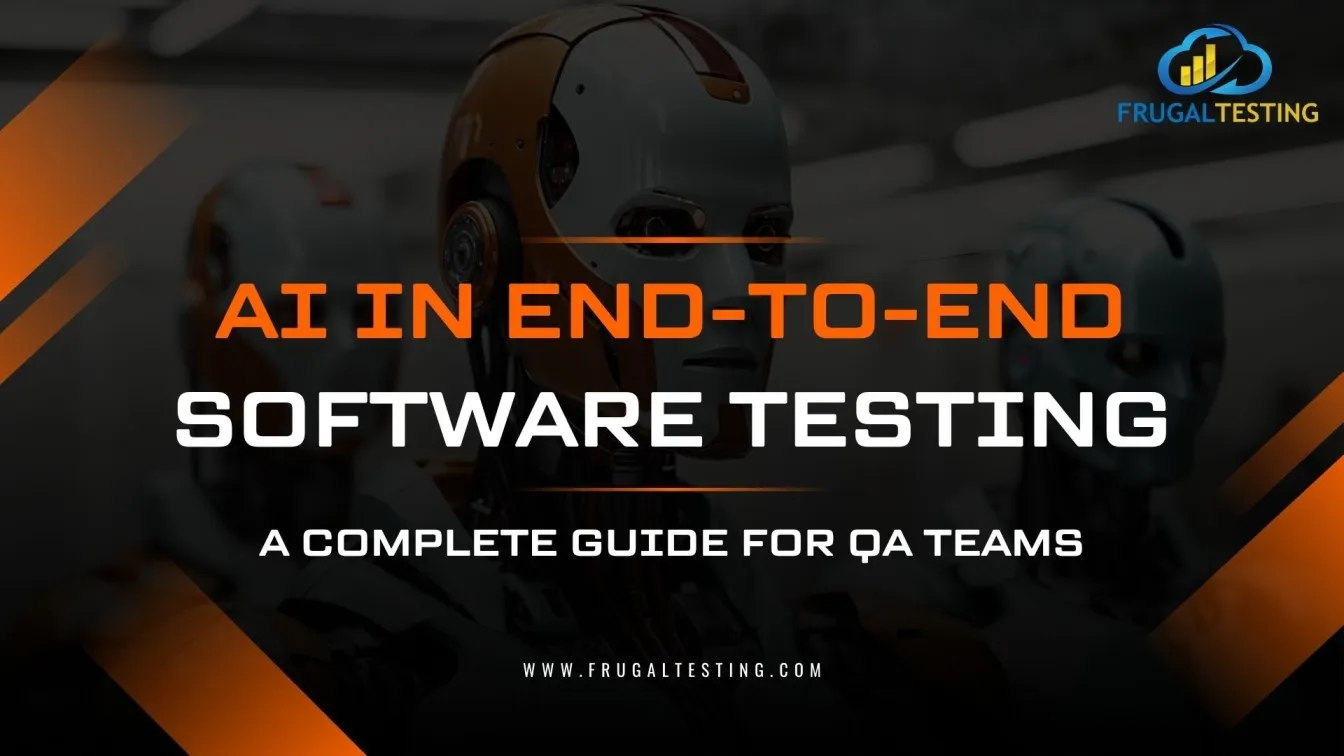
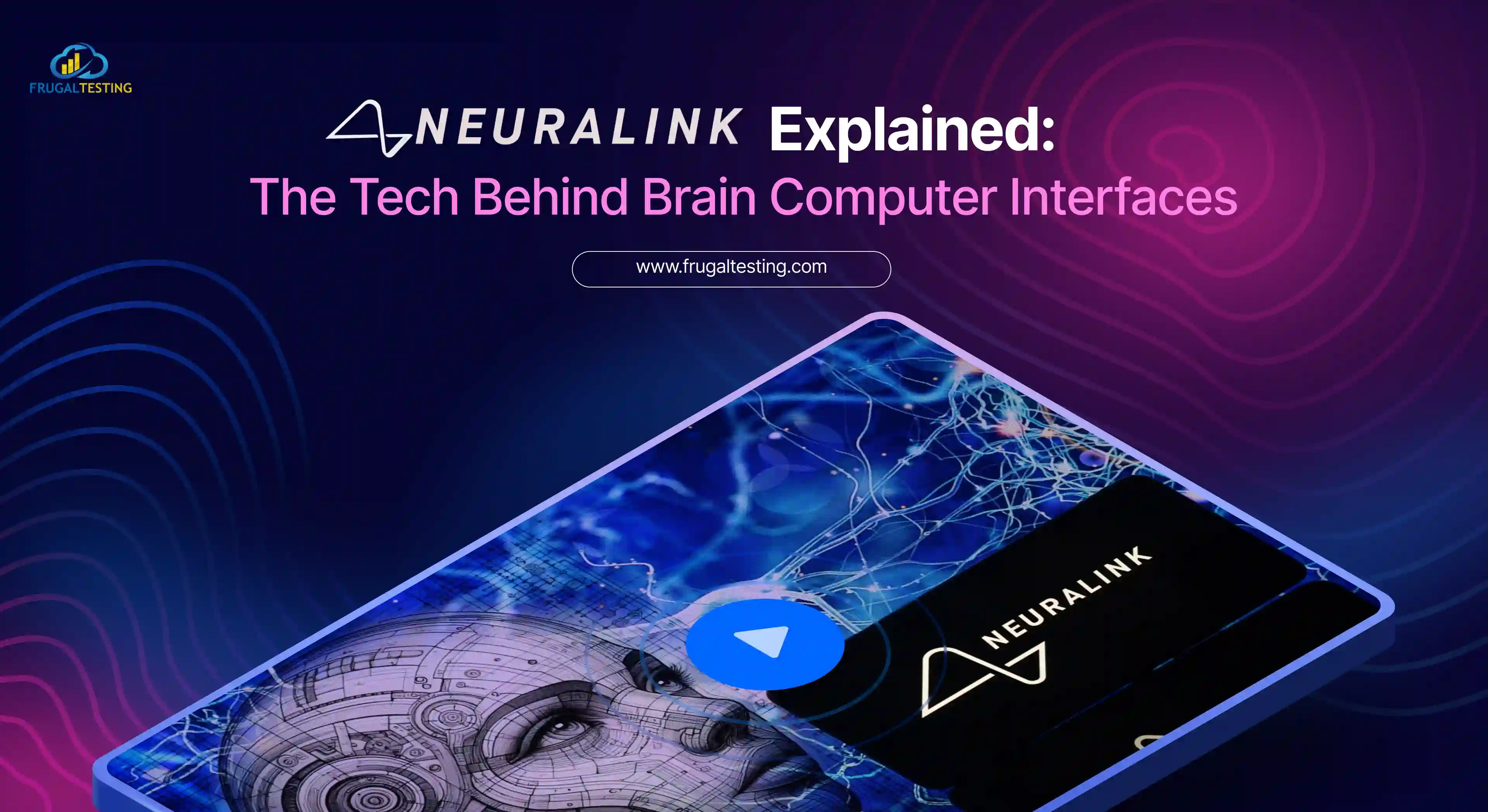
%201.webp)
